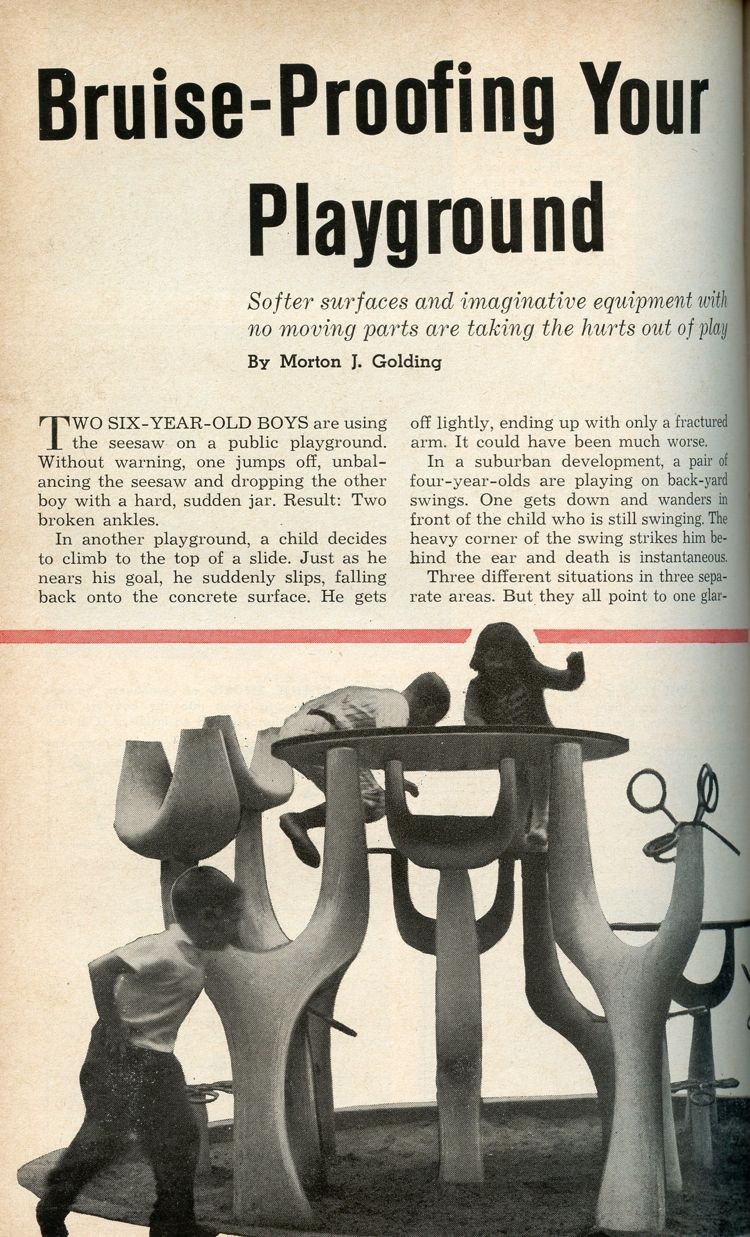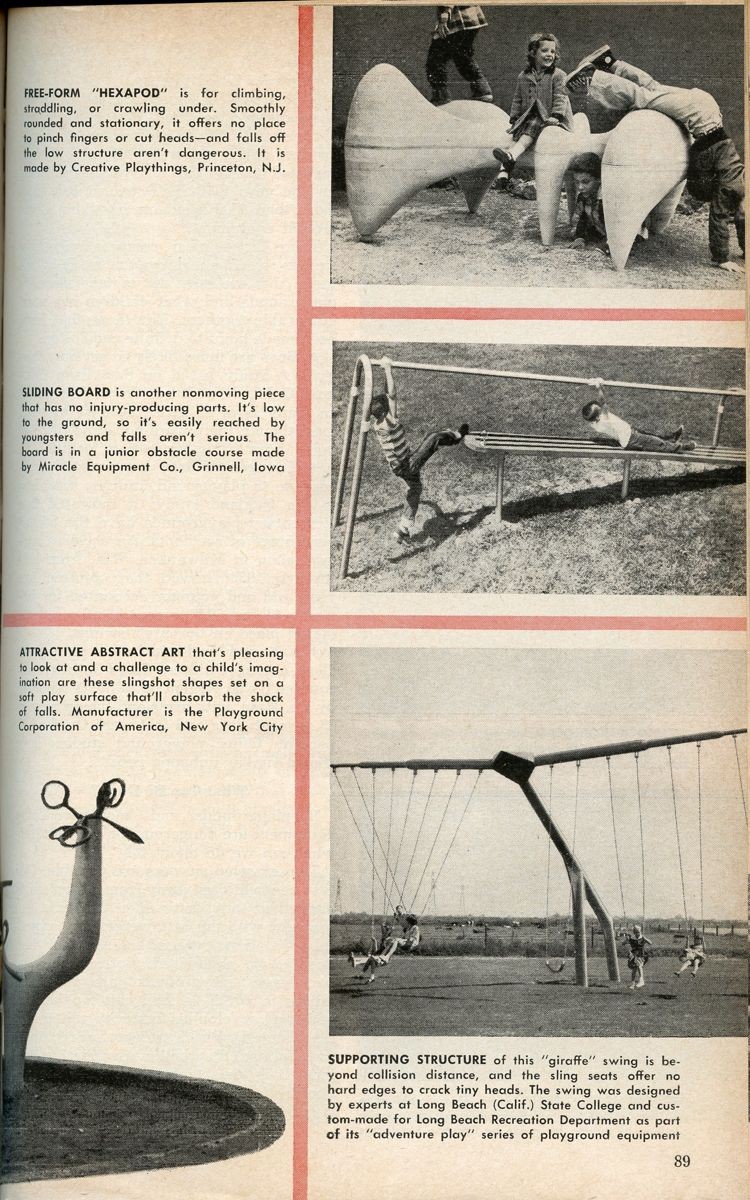From the educational toy to the educational playground
An economy in shift from wartime to peacetime production and in search of new markets, swelling birthrates, rising wages, the expansion of middle-class family values and the emphasis on a exemplary parenting contributed to the success of the educational toy after World War II.
The post-War II baby-boom, stimulated the debate on parenting, child rearing and education, and heightened spending on children. Postwar parents spent record sum on amusements, child’s rooms filled with toys, often toys with an enhanced educational value. An educational toy basically emphasises on early learning as a form of social improvement. In the postwar era, creativity was perceived as a way to reinforce society (Ogata 130).
Holgate Brothers Company, Playskool and Creative Playthings promoted such toys, and found their clientele in the educated upper middle class (Ogata, 129). Playskool and Holgate were established during the interwar period. Together with designers and psychologists these companies developed toys in response to needs of the early childhood education, especially private nursery schools. (Ogata 134). At the same time, child development became a field of scientific research and was established at major universities (Ogata, 132).
Creative Playthings was founded in 1945 and expanded in 1953, when it opened the division for Play Sculptures. By this, the educational toy expanded in public space. Creative Playthings became linked with sophisticated taste and modern aesthetics through a series of collaborations with MoMA, where Education Director Victor D’Amico pioneered the method of creative art education (Ogata 149,150).
Starting in the early 1950s, designers such as Joseph Brown, landscape architects such as Robert Royston, play-innovative cities, such as Philadelphia and Creative Playthings were the main actors in a new era of playground design in the U.S. New types of material boosted the innovation in this field, as well as a rising demand from growing suburban cities.
Images and references:
Report on U.S. Companies producing „Intelligent“ play equipment featured in Popular Mechanics (September 1963):
– Creative Playthings, Princeton N.J.
– Miracle Equipment Comp., Grinnel Iowa
– Miracle Equipment Company ads 1960-1963 from „Parks & Recreation“
– Miracle Equipment Company ads 1968-1976 from „Parks & Recreation“
– Playground Corporation of America
Biblio
Ogata, Amy F. Creative Playthings: Educational Toys and Postwar American Culture, Winterthur portfolio 39, 2/3 (2004).
published on June, 29 2013, updated July, 30 2013.




